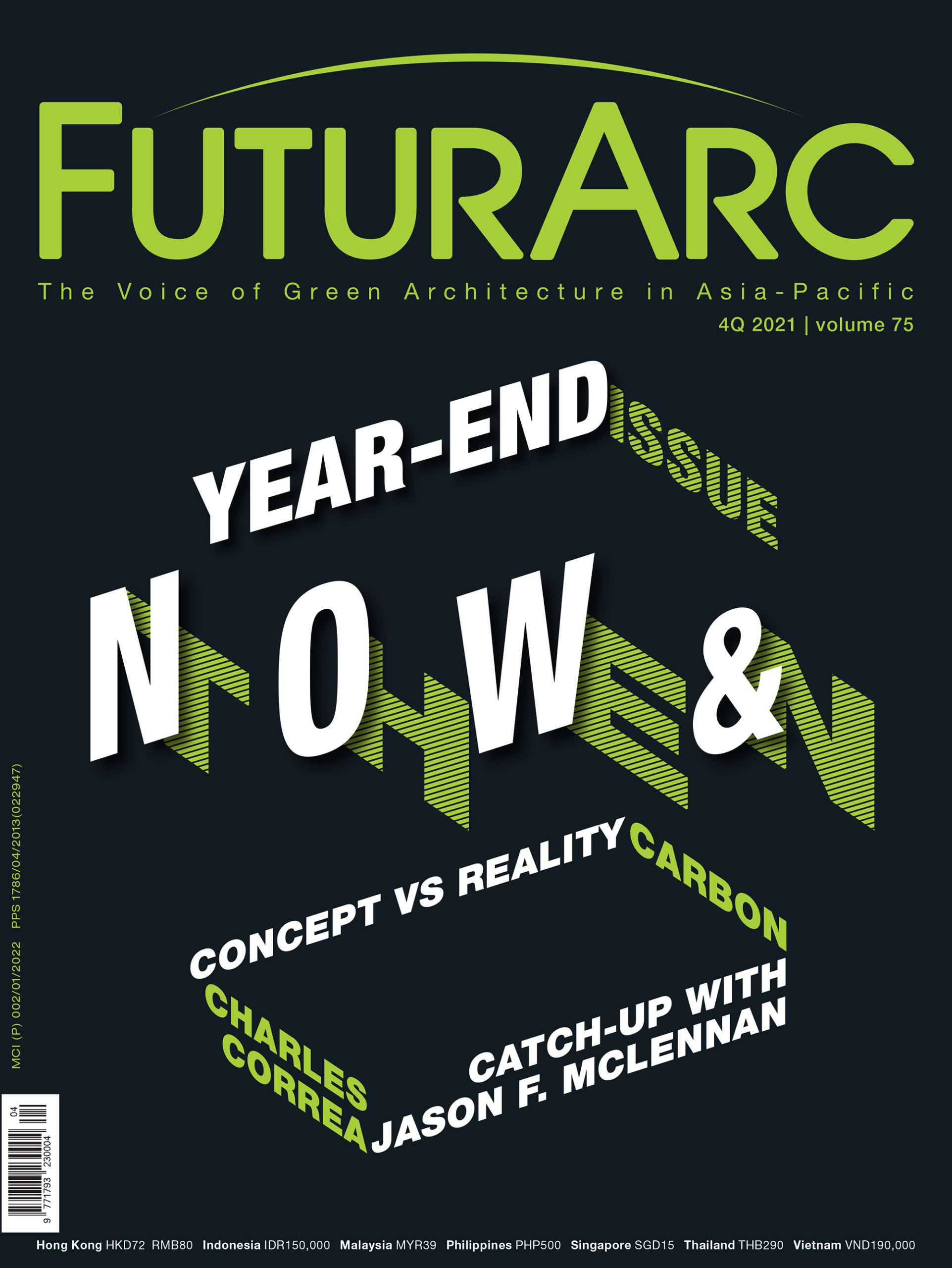Year-End 2021: Now & Then
Dear FuturArc Readers,
“Thoughts are the architects of our circumstances.”
I read this some time ago from a spiritual text.
Thoughts do have a way of flowing out into our words and deeds. As such, they have a powerful impact on how we see the world and how we construct our realities.
Thoughts move us forwards or back, impressing upon us visions or memories. This year-end issue is a medium through which we look at past concepts in their current manifestations and future possibilities based on present status quo, now.
Thoughts can become reality: Auroville was envisaged to be a place for all humanity, built on a foundation of an inclusive social consciousness and oneness, founded by a spiritual teacher. But has it fulfilled its own utopic vision? Bhawna Jaimini set off to find out, intrigued by one of the loftiest ideals for a township in her country of birth and upbringing, which has been on her mind as a story she wanted to tell—and finally did.
Thoughts realised can become memorialised: Charles Correa was described by some as being ahead of his time—whose vision of architecture was expressed in work dominated by passive strategies, localised in climate and site. His buildings that still exist today are being investigated by Nipun Prabhakar, who undertook a photographic journey into the question of what aspects of Correa’s work have survived and how they are relevant in today’s context.
Thoughts can start a revolution, but only if everyone shares the same idea: carbon has been on the minds—and agendas—of most industry players and government bodies. However, not everyone agrees on the same meaning. The Advancing Net Zero global course of action, set by the World Green Building Council towards total sector decarbonisation by 2050, has given rise to a myriad of programmes in different countries, initiated by local Green building councils or agencies. Some have passed laws; some have set their own master plans or targets—but if true net zero is to be reached worldwide in less than three decades, we need a one-pointed, well-defined framework where meanings and measurements are clearly understood and applied. This is the focus of our year-end reports, on present-day initiatives of carbon and the paths ahead.
From our chat with Jason F. McLennan, Green architect extraordinaire, whom we brought back for a FuturArc Interview ‘redux’, certifications or third-party standards that have “clear definitions, clear requirements and metrics, and then you have to prove that you’ve met them” help avoid carbon washing or confusion. “That’s why I like certifications to get around this issue and to have everyone speaking a similar language, and having accountability and transparency in claims that are made.”
Although, even before that, if we start from the point of ideation to reduce carbon (and embedded carbon) as much as possible—reuse, repurpose, reinterpret; draw power from renewable resources; and be fully responsible for the built form’s use—we could already be halfway there, by first having the right thoughts.
Candice Lim
Editor-in-Chief
Table of Contents
1Q 2024: HEALTH/WELLNESS
Previous issues:
⠀
4Q 2023: YEAR-END ISSUE | WATER
⠀
3Q 2023: GREEN AWARDS | CROSS-GENERATIONAL ARCHITECTURE
⠀
2Q 2023: OLD IS GOLD
⠀
1Q 2023: MOBILITY & TRANSPORT
⠀
4Q 2022: YEAR-END ISSUE | POLICY VS PRACTICALITY, PRACTICE VS PRINCIPLES, PROGRESS VS PLANET
3Q 2022: GREEN AWARDS | REINTERPRETATION
2Q 2022: NEW & RE-EMERGING ARCHITECTURE
1Q 2022: HOUSING ASIA
To read the complete article, get your hardcopy at our online shop/newsstands/major bookstores; subscribe to FuturArc or download the FuturArc App to read the issues!



